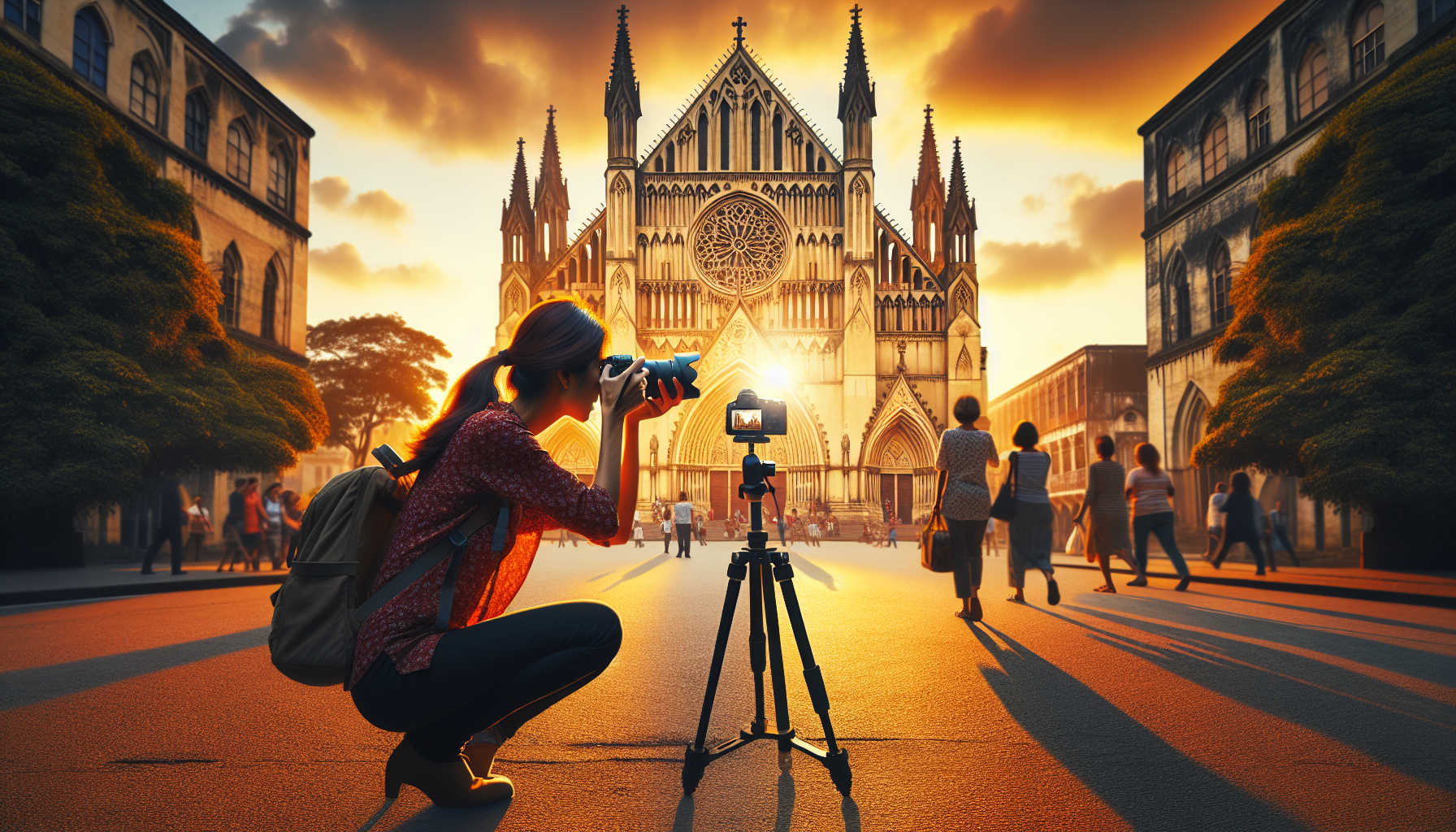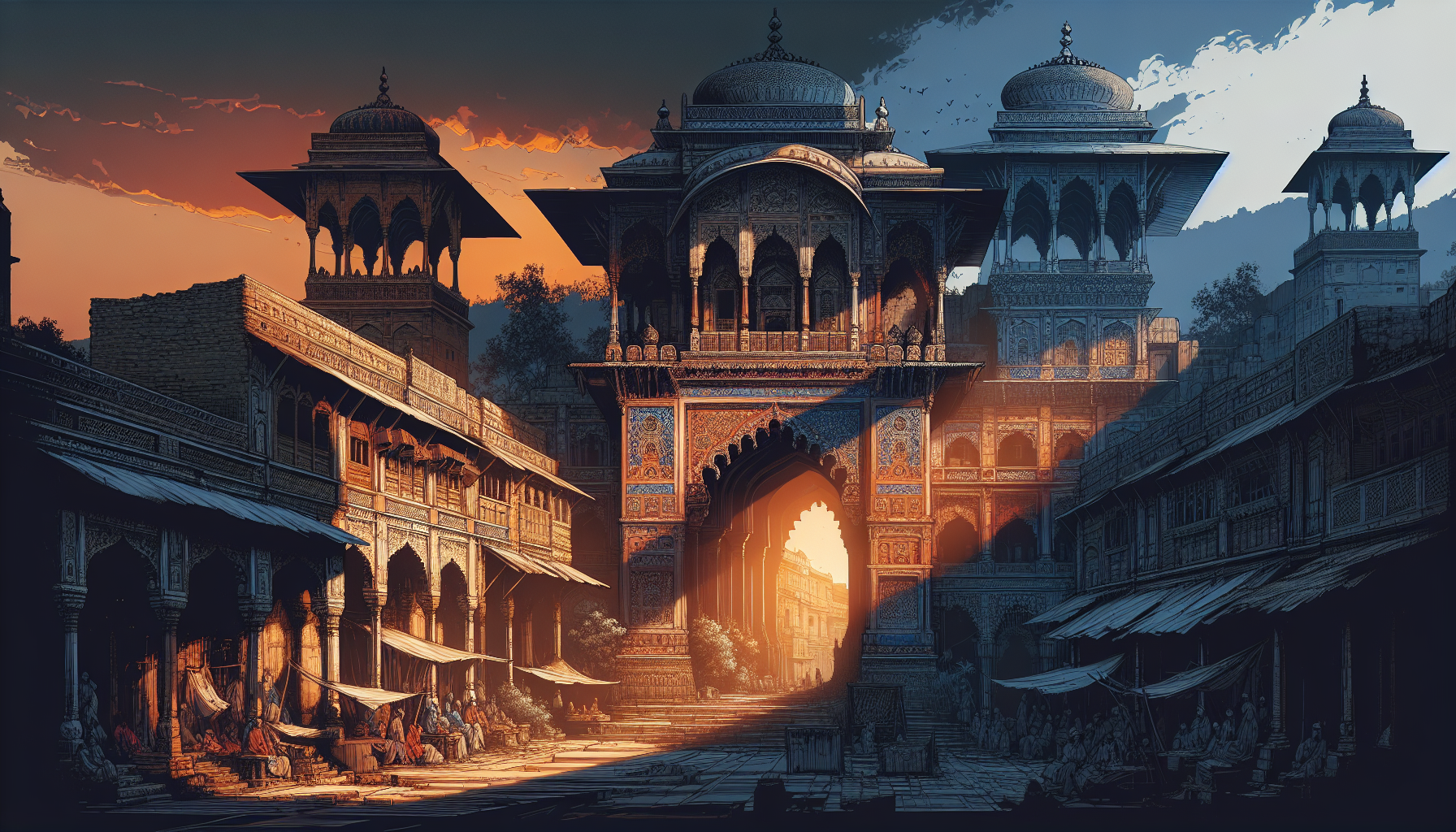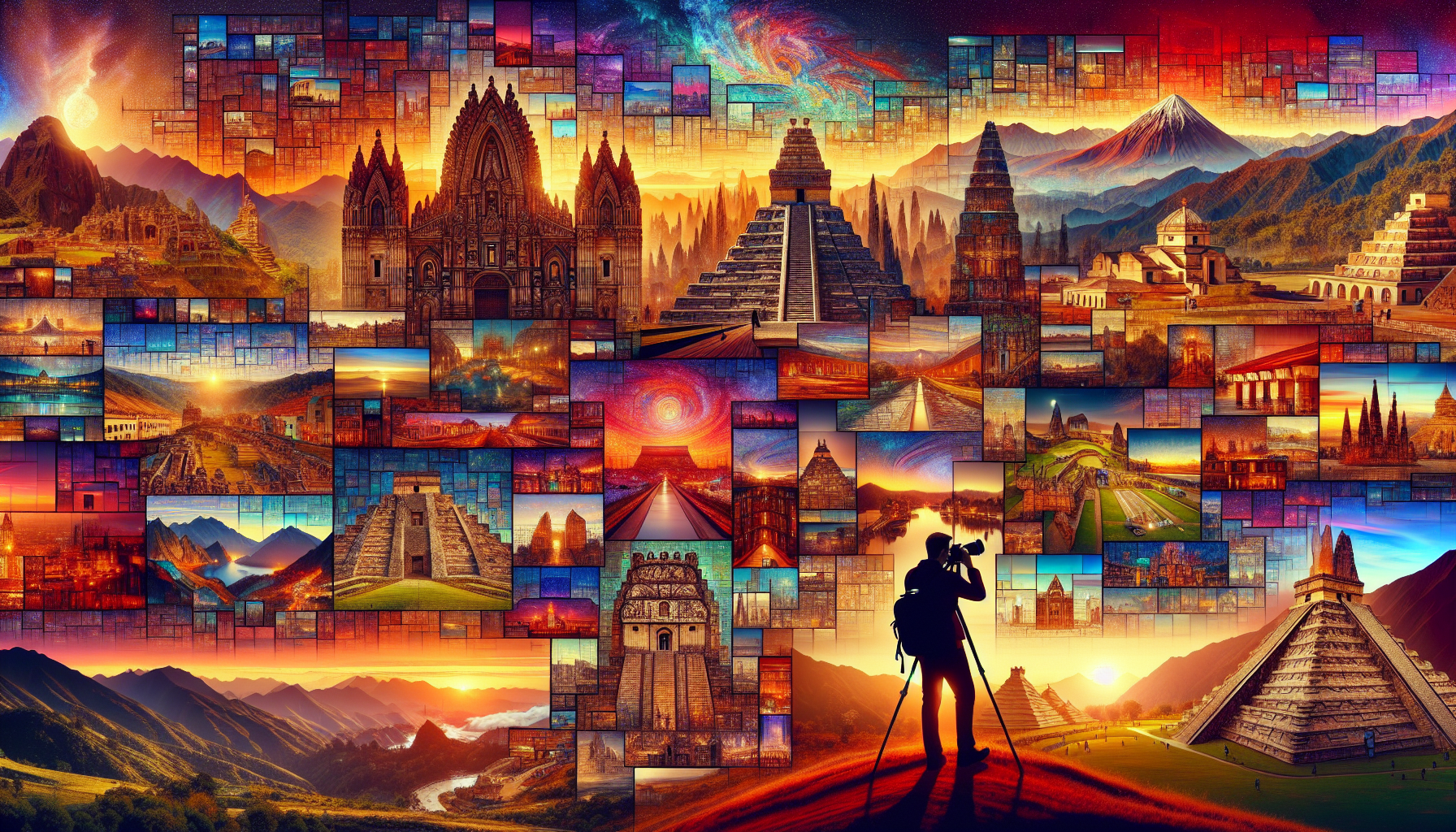Mastering Architectural Photography Techniques: How to Showcase Structures in Pakistan offers an exciting journey through diverse landscapes and rich history. As a local enthusiast, I’ve spent countless mornings capturing the brilliant play of light on the Badshahi Mosque’s red sandstone. The early morning light, especially during winter, can be magical. It highlights the intricate details that often go unnoticed. Understanding the cultural context is crucial. Each structure tells a story, from the Mughal era to colonial influences. With organizations like Heritage Foundation of Pakistan preserving our architectural heritage, photographers have endless opportunities to explore and document these gems. Remember, patience and the right angle can turn a mundane shot into a masterpiece.
Related: The Ultimate Guide to Architectural Photography in Pakistan: Capturing Heritage & Modern Marvels
Mastering Architectural Photography Techniques: How to Showcase Structures in Pakistan
Exploring the architectural wonders of Pakistan is a photographer’s dream. From the majestic Badshahi Mosque in Lahore to the intricate designs of Mohatta Palace in Karachi, each structure has its own story. To truly capture these stories in your photography, you need to hone your skills and understand the nuances of local architecture.
Capturing the Essence of Pakistani Architecture
Start by familiarizing yourself with the historical context of the buildings you plan to photograph. This knowledge can shape your perspective and help you highlight unique architectural elements. For instance, during a visit to the ancient city of Taxila, I discovered how early Buddhist influences shaped the local architecture. This insight allowed me to focus on intricate carvings and symmetry in my shots.
Lighting plays a crucial role in architectural photography. In Pakistan, the golden hours—shortly after sunrise and before sunset—offer the best natural light. This is when the colors of the stone structures truly come alive. I remember capturing the Lahore Fort at dawn, and the soft light brought out its rich red tones beautifully. It’s moments like these that make early morning shoots worth the effort.
Tips for Shooting in Pakistani Cities
- Always respect cultural norms when shooting near religious sites.
- Consider hiring a local guide for insights and access to lesser-known spots.
- Use a tripod for stability, especially during low-light conditions.
For more detailed guidance, local organizations like National College of Arts offer workshops and resources for aspiring photographers. Embrace the diversity of Pakistani architecture, and let your lens tell a story that transcends time and culture.
Exploring Cultural Landmarks: Key Locations for Architectural Photography in Pakistan

When it comes to showcasing architectural brilliance in Pakistan, few places offer as much diversity and richness as our cultural landmarks. As a local photographer with a passion for capturing the essence of these sites, I can confidently guide you through some of the must-visit locations.
Iconic Structures for Photography
The majestic Badshahi Mosque in Lahore is an absolute delight. Built in the Mughal era, its intricate red sandstone and marble work make it a favorite among photographers. Don’t miss the chance to capture it at sunset when the sky adds a stunning backdrop.
For those venturing to the north, the Baltit Fort in Hunza offers breathtaking views and a glimpse into the region’s rich history. Early morning shots can capture the fort against the dramatic backdrop of the Karakoram Mountains.
Finding Unique Perspectives
Islamabad’s Faisal Mosque is another landmark where architectural photography thrives. Its unique, modern design stands out against the Margalla Hills. Try shooting from different angles to play with the mosque’s geometric shapes.
- Visit during the early hours to avoid crowds.
- Experiment with drone photography for aerial views.
- Engage with locals to learn about hidden gems.
A report by Adobe highlights how understanding light can significantly enhance architectural photography. In Pakistan, the golden hours of sunrise and sunset provide ideal lighting conditions.
Engaging with local communities can also provide insights and stories that add depth to your photography. Whether you’re capturing the grandeur of historical structures or the simplicity of rural architecture, Pakistan offers a rich tapestry for photographers to explore.
Lighting Techniques for Capturing Stunning Architectural Details
When it comes to showcasing the intricate beauty of Pakistan’s architectural marvels, mastering lighting techniques is essential. As a local photographer, I’ve spent countless hours exploring the vibrant streets and serene landscapes of our country, capturing its stunning structures. One of my favorite places to photograph is the Badshahi Mosque in Lahore, where the play of light on red sandstone creates an ethereal glow during the golden hour.
Discover the Charm of Pakistan’s Architectural Wonders
To truly highlight the details of our cultural landmarks, timing your shoot is crucial. Early mornings and late afternoons offer the soft light that brings out textures and patterns. This is especially true for places like the Mohatta Palace in Karachi, where the intricate designs are best captured with diffused light. Always aim to shoot during these periods to avoid harsh shadows that can obscure details.
Lighting Equipment and Techniques
For those looking to elevate their architectural photography, consider the following tips:
- Use a polarizing filter to reduce glare and enhance colors, especially useful when photographing reflective surfaces.
- Experiment with long exposures in low-light conditions to capture the ambient glow of structures at night.
- Consider using external flashes sparingly to fill in shadows and highlight specific details.
Exploring different locations with varying light conditions can significantly improve your skills. For more inspiration on where to shoot, check out our guide on the [Top Drone Photography Locations in Pakistan: Stunning Views & Hidden Gems]best places for drone photography in Pakistan.
Remember, each landmark has its unique charm, and understanding how to utilize light will allow you to capture breathtaking images that tell a story. Whether you’re photographing the towering minarets of Faisal Mosque or the intricate carvings of the Lahore Fort, the right lighting can make all the difference.
Mastering Architectural Photography Techniques: Composition Tips for Pakistani Structures
When it comes to capturing the essence of Pakistani architecture, the magic often lies in the composition. Whether you are photographing the majestic Badshahi Mosque in Lahore or the intricate Shah Jahan Mosque in Thatta, understanding how to frame your shot can make all the difference.
Showcasing Architectural Beauty in Pakistan
One of my favorite spots to photograph is the Faisal Mosque in Islamabad. It’s crucial to consider the symmetry and lines inherent in these structures. When I first started, I found that using the rule of thirds helped to balance the image. Position key elements along these lines and intersections to create more engaging photos.
Always consider the background. Pakistani architecture is often surrounded by natural beauty. Use this to enhance your composition. For instance, capture the Himalayas behind the Baltit Fort. This can add depth and context to your images.
The Role of Light in Highlighting Structures
Lighting plays a pivotal role in architectural photography. In Pakistan, the golden hours of early morning or late afternoon are perfect. The soft light highlights the intricate designs without harsh shadows. I remember capturing the sun setting over Mohenjo-daro, the soft hues brought the ancient ruins to life.
- Use reflections from nearby water bodies to add an artistic touch.
- Experiment with different angles to find the most dramatic perspectives.
Don’t forget to explore local insights. Chat with locals or guides for hidden gems. Often, they can point out unique angles or lesser-known details that make for compelling photographs. Organizations like Pakistan Tourism Development Corporation can also provide valuable resources.
Local Insights: Working with Architectural Styles Unique to Pakistan

Pakistan’s rich architectural landscape offers a captivating blend of history and modernity. As a local photographer, I’ve had the chance to explore and capture architectural treasures ranging from the ancient Mughal marvels of Lahore to the contemporary wonders of Islamabad.
Capturing the Essence of Mughal Heritage
Mughal architecture in Pakistan, characterized by grand domes and intricate tile work, is a photographer’s dream. The Lahore Fort and Badshahi Mosque are prime examples. To master architectural photography techniques in these settings, aim to shoot during the golden hour. The soft light highlights the ornate details and creates dramatic shadows. I once visited the Badshahi Mosque at dawn, and the play of light across the red sandstone was breathtaking.
Modern Marvels in Islamabad
Islamabad’s skyline tells a different story, showcasing contemporary structures like the majestic Faisal Mosque. For these modern styles, symmetry and clean lines are key. I often use a wide-angle lens to capture the mosque’s unique geometric design. It’s essential to experiment with angles to find the perfect shot. Consider visiting on a clear day to emphasize the mosque’s white facade against the blue sky.
Here are some tips to consider when photographing Pakistan’s diverse architectural styles:
- Research the historical significance and design elements of your subject.
- Visit at different times to see how lighting changes the mood.
- Engage with locals to gain insights and discover hidden gems.
For further inspiration, organizations like Pakistan Tourism Development Corporation offer valuable resources on architectural sites. Embrace the unique blend of history and innovation that defines Pakistan’s architectural identity, and let your photographs tell these timeless stories.
Conclusion
As we draw to a close, let’s reflect on the art of capturing architectural beauty in Pakistan. Mastering these techniques goes beyond just a click—it’s about narrating stories through your lens. Each structure, from the majestic Badshahi Mosque to the contemporary marvels in Islamabad, offers a unique narrative.
Showcasing Architectural Marvels in Pakistan
One memorable experience was an early morning shoot at Lahore Fort. The soft, golden light perfectly highlighted the intricate Mughal carvings. It reminded me of the importance of timing. To truly capture architectural essence, consider the following:
- Lighting: Morning and late afternoon are perfect for soft, diffused light.
- Angles: Explore unique angles to emphasize grandeur or detail.
- Local Insights: Engage with locals for untold stories about the landmarks.
Personal Touch and Local Insights
In Karachi, while photographing the Quaid-e-Azam’s Mausoleum, a local historian shared insightful stories. His tales added depth to my images, turning them into vivid narratives. Never underestimate the power of local knowledge—it can transform a good photo into a great one.
For budding photographers, consider workshops by World Photography Organisation. They offer invaluable lessons tailored to different skill levels. Additionally, platforms like National Geographic provide inspiration and insights from experts worldwide.
Remember, architectural photography is more than technique. It’s about connecting with the soul of the structure and the culture it embodies. As you continue your journey, I hope these tips enrich your craft and help you showcase Pakistan’s architectural splendor with authenticity and passion.
Frequently Asked Questions
What are the best architectural photography techniques for capturing cultural landmarks in Pakistan?
To effectively capture the essence of Pakistan’s cultural landmarks, consider using techniques such as the golden hour lighting to highlight intricate details, employing wide-angle lenses for sweeping views, and experimenting with various perspectives to showcase the grandeur and historical significance of structures like Badshahi Mosque and Lahore Fort.
How can lighting conditions impact architectural photography in Pakistan?
Lighting plays a crucial role in architectural photography, especially in a country like Pakistan with its diverse weather conditions. Optimal lighting can enhance textures, shadows, and colors, allowing photographers to capture the true essence of structures. Early morning or late afternoon light is often best for a softer, more flattering look that highlights architectural details without harsh shadows.
What local insights should photographers consider when photographing architectural structures in Pakistan?
When photographing architectural structures in Pakistan, it’s important to respect local customs and traditions, especially in religious or culturally significant sites. Engaging with local guides can provide valuable insights into the history and significance of landmarks, enriching the narrative behind your photographs. Additionally, understanding peak tourist times can help in planning shoots to avoid crowds and capture serene images.


Leave a Reply